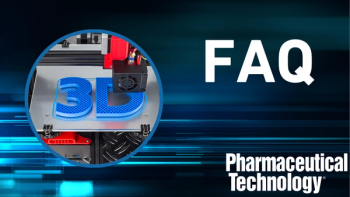
- Pharmaceutical Technology, October 2022
- Volume 46
- Issue 10
- Pages: 38-40
The State of Contamination Control
Various advances in contamination control are being utilized to reduce the chance pollutants contaminate a drug product.
Preventing contaminants from interfering with pharmaceutical operations is critical for the safety of the workers handling the materials and the consumers to whom the final product is delivered. Apart from the self-evident health risks brought about by contamination, the financial risks can be just as dire; management firm McKinsey found that, on average, recalls cost the industry between $2.5 billion and $5 billion per year through non-routine costs and lost sales of new and existing products (1). Moreover, if product contamination results in a recall, the damage will be more than monetary; latent effects, such as consumer and investor confidence in a company, brand, or product must also be considered.
This naturally raises the question of what is being done to prevent contamination in the pharmaceutical field. The following reviews key areas of the pharmaceutical production process to look at what novel techniques, technologies, and policies are being implemented to mitigate the chance of contamination.
Eliminating residual contaminants
When a process is repeated in stainless steel, sterilization is necessary between batches to ensure product quality. Regardless of how this is done, whenever a system is exposed to multiple batches (and, in the case of manually cleaned systems, human intervention) the chance that the process fails to fully sterilize the system exists. This is especially true for lower-grade systems or ones that require complex clean-in-place/sterilize-in-place (CIP/SIP) procedures that require significant, specialized training to correctly perform.
One way in which the industry has begun addressing this issue is through automation. Not only does this eliminate the need for direct human intervention, it simplifies many of the procedural steps that can indirectly affect the cleaning process. Alex Van Hagen, Life Sciences Sector Specialist at Watson-Marlow Fluid Technology Solutions, discussed the impact this can have on the manufacturing process in the “Sterilization’s Horizon: Improving Automation, Single-Use Technologies, and Annex 1” episode of Pharmaceutical Technology’s Drug Digest series (2). Van Hagen specifically highlighted the rise of vaporized hydrogen peroxide (H₂O₂) systems in aseptic processing, which has made key advances in its efficacy as a sterilization tool.
According to Van Hagen, companies historically used open-systems where human operators would go in and sterilize the machinery. However, this process opened the gates to massive amounts of contamination risk.
“If you are going to open it up and have people going in and cleaning it, that’s all [well and good],” said Van Hagen. “However, they’re using their hands. Our hands are [how] we interact with the world, it’s the highest bioburden-laden part of our body except for our mouths.”
This method, risky as it is, was one of the cheapest, fastest ways to sterilize bioreactors. However, when an existing patent that was preventing companies from developing faster ways of using H₂O₂ in aseptic production expired in 2002, H₂O₂ emerged as a potentially viable alternative; to this point, multiple days of cleaning were needed to use the chemical. Now, with the advances that have been made in its usage over the past 20 years, it can be done in as little as 30 minutes, making an automated system a feasible alternative to historical practices (2).
Addressing extractables and leachables
With single-use consumables, the chances of prior batch residue contaminating a fresh batch is removed, but the chances for extractables and leachables (E&L) to enter the product is introduced. Because they are made of various types of plastic, rather than stainless-steel, chemicals may now corrode the system and contaminate it, necessitating highly regulated E&L studies to determine what chemicals can be safely delivered through the system. Technological advancements have largely been in increasing the accuracy and speed of these studies. For instance, high-resolution, accurate-mass mass-spectrometers (HRAM-MS) have gained popularity as a tool to understand the structure of unknown compounds.
That said, the E&L field sees significant change through tightened regulatory oversight, albeit in a somewhat unconventional way. While direct changes to regulatory insight do occur, current guidance is not necessarily prescriptive; often, changes come down to changes in interpretation (3). To keep up with ongoing regulatory interpretations, self-governing bodies issue recommendations for E&L testing.
The Product Quality Research Institute (PQRI), one such institution, pushed for several changes in its most recent recommendations, most notably as it pertains to a justification and outline for toxicological evaluation of leachables in parenteral drug products (PDPs) (4). In addition to various other recommended procedures, the organization recommended that a qualification threshold (QT) of 5 µg/day is appropriate for orally inhaled or nasal drug products in the absence of supporting general toxicology data and an identified potential for irritation or sensitization in PDPs. Apart from PDPs, PQRI also issued guidance for unique considerations necessary for biologics (4).
Changes in the cleanroom
Lastly, cleanroom technologies have also seen some advancements that are changing how researchers work in the cleanroom. Stephen Tierney, president, XiltriX North America, noted that certain technologies have begun to gain greater prominence in cleanrooms. One example of this is continuous particle counting measurements, such as volatile organic compounds, which are becoming more broadly incorporated. Similarly, he also noted that sensors are being put in a single system; analog magnehelic differential pressure sensors, for example, can now be digitally integrated into an environmental monitoring system alongside a room’s conditions and particle counters (5).
As it concerns cutting edge advancements, there are many promising advances that have not yet crested the horizon for widespread use. Alex McDaniel, Environmental Monitoring Program manager, Element, noted that while conventional microbiology testing methods are set to continue seeing use in the near future, rapid microbiology has begun garnering greater interest. Traditional microbiology methods take between 7–10 days, depending on duration of media dual incubation conditions, a painful timeframe that does not take into account the time it takes to identify and report microbial infection. Rapid methods would allow for quicker insight (hours, or even minutes) into the state of batch release for various forms of assays, including raw materials, sterility confirmation, water monitoring, and active air sampling (5).
References
- T. Fur, K. George, and J. Pal, The Business Case for Medical Device Quality, McKinsey & Company (October 2013).
- M. Rivers and F. Thomas, “Drug Digest: Sterilization’s Horizon: Improving Automation, Single-Use Technologies, and Annex 1,” Drug Digest, PharmTech.com, accessed Sept. 9, 2022.
- F. Thomas, “Meeting E&L Expectations,” Pharm Tech 43 (12) 2019.
- PQRI, Safety Thresholds and Best Demonstrated Practices for Extractables and Leachables in Parenteral Drug Products (Intravenous, Subcutaneous, and Intramuscular), Oct. 28, 2021.
- G. Playter, “Advances in Environmental Monitoring,” Pharm Tech 46 (9) 2022.
About the author
Grant Playter is the Assistant Editor for Pharmaceutical Technology, BioPharm International, and Pharmaceutical Technology Europe.
Article details
Pharmaceutical Technology
Vol. 46, No. 10
October 2022
Pages: 38-40
Citation
When referring to this article, please cite it as G. Playter, "The State of Contamination Control," Pharmaceutical Technology 46 (10) 38-40 (2022).
Articles in this issue
about 3 years ago
Adopting Smart Development Strategiesabout 3 years ago
Reformulating Successabout 3 years ago
Analyzing Extractables and Leachables in Single-Use Systemsabout 3 years ago
Improving Sterility Using Blow-Fill-Seal Technologyabout 3 years ago
Electrochemistry for API Synthesisabout 3 years ago
Shining a Light on Lipid Nanoparticle Characterizationabout 3 years ago
The Future of Drug Delivery for Biopharmaceuticalsabout 3 years ago
Biologic Standards in the Pharmacopoeias: An Updateabout 3 years ago
Choosing the Right CDMO for CGT ProgramsNewsletter
Get the essential updates shaping the future of pharma manufacturing and compliance—subscribe today to Pharmaceutical Technology and never miss a breakthrough.





